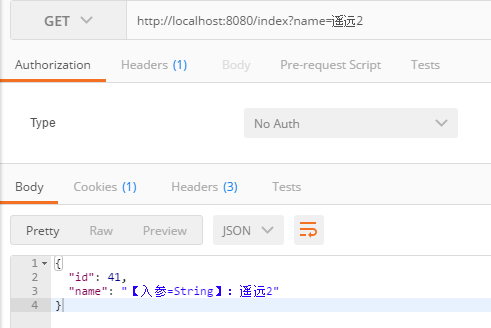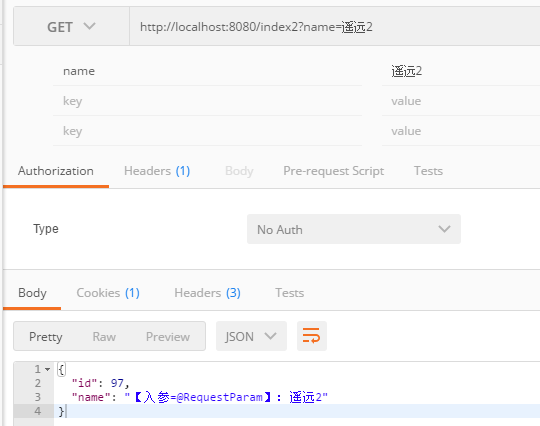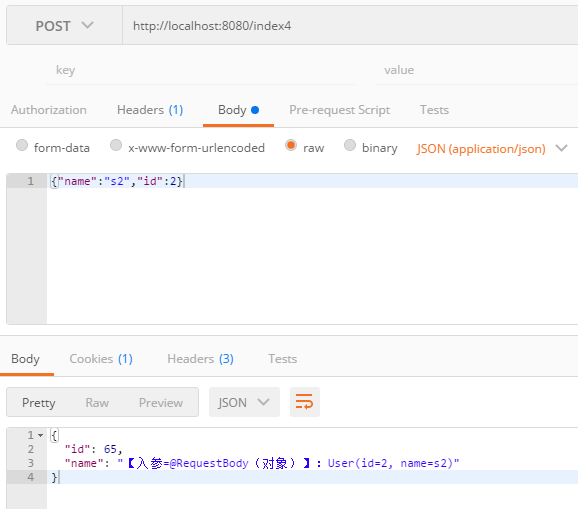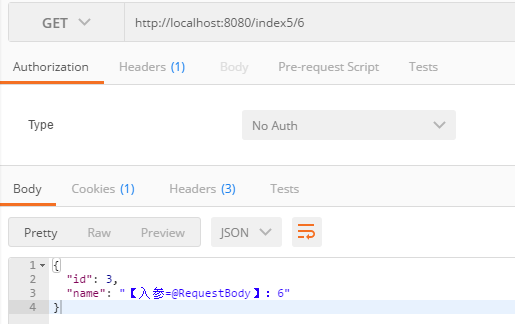spring boot 入参方式
方式:
1)、直接写,如public User index2(String name)
2)、@RequestParam
与直接写的区别是,可以写默认值。
3)、@RequestBody
因为传入的是String类型的json,所以可以使用String类型,如:@RequestBody String jsonStr
当然,也可以使用相应的对象类型。
4)、@PathVariable
url中{}
例子:
1)、直接写
@RestController public class UserController { @GetMapping("/index") public User index(String name) { log.info("接收:{}",name); return new User(RandomUtil.randomInt(100),String.format("【入参=String】:%s", name)); } }

2)、@RequestParam
@GetMapping("/index2")
public User index2(@RequestParam(value="name",defaultValue="World") String name) {
log.info("接收:{}",name);
return new User(RandomUtil.randomInt(100),String.format("【入参=@RequestParam】:%s", name));
}

3)、@RequestBody--String
@RequestMapping("/index3")
public User index3(@RequestBody String jsonStr) {
log.info("接收:{}",jsonStr);
return new User(RandomUtil.randomInt(100),String.format("【入参=@RequestBody(String)】:%s", jsonStr));
}

3)、@RequestBody--对象
@RequestMapping("/index4")
public User index4(@RequestBody User user) {
log.info("接收:{}",user);
return new User(RandomUtil.randomInt(100),String.format("【入参=@RequestBody(对象)】:%s", user));
}

4)、@PathVariable
@RequestMapping("/index5/{id}")
public User index5(@PathVariable("id") long id) {
log.info("接收:{}",id);
return new User(RandomUtil.randomInt(100),String.format("【入参=@RequestBody】:%s", id));
}

